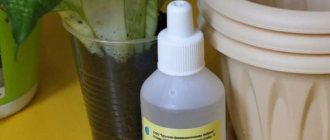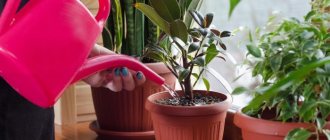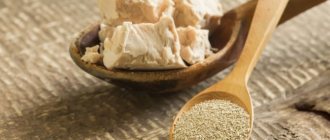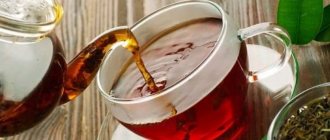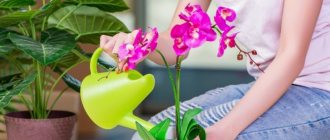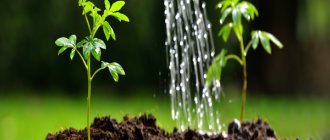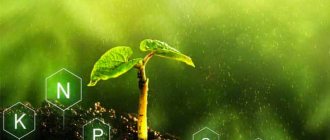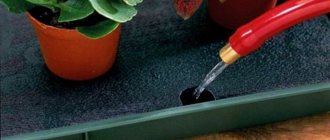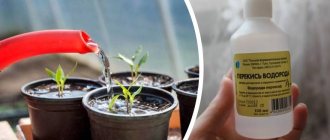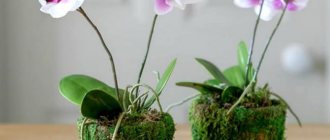Why do flowers need hydrogen peroxide?
Hydrogen peroxide (H2O2) is considered an ideal option for disinfecting indoor flowers. It helps prevent the development of fungal, viral and bacterial infections in both healthy and damaged flowers.
H2O2 will also help stop the processes of rotting of the root system, disinfect and saturate the soil with oxygen, and also speed up flowering.
INTERESTING! If an indoor flower begins to fade, then hydrogen peroxide can revive it.
A little about hydrogen peroxide
This substance belongs to the representatives of peroxides and is called peroxide or hydrogen peroxide and is a liquid with a metallic taste, without color. It dissolves well in water. Important biological features of hydrogen peroxide are its bactericidal properties and ability to oxidize.
The drug is produced in the form of an aqueous solution of various concentrations, as well as in tablets called Hydroperite. Hydrogen peroxide has a wide range of uses, in particular:
- in industry;
- in analytical chemistry;
- in medicine;
- as a cosmetic product;
- in the food industry;
- at home;
- in crop production.
How to dilute hydrogen peroxide for flowers
You will not just need to make a mixture of hydrogen peroxide for watering indoor flowers. The proportions must be precisely maintained so as not to harm the flower garden. You also need to know how often to apply peroxide when growing indoor flowers.
REFERENCE! In all cases, the working solution for both processing and feeding indoor flowers will be prepared from a 3% variety of the drug. The advantage is that it can be easily found in any pharmacy. Pure H2O2 preparation, undiluted with water, is never used!
Hydrogen peroxide solution for watering flowers proportions
Now we’ll tell you exactly how to use hydrogen peroxide for watering indoor flowers. The proportions must be maintained as follows: on average 2 drops of peroxide per 1 liter of water.
How to dilute peroxide for spraying indoor plants, proportions
To prepare a spray product, pour 2-3 tablespoons (30-50 ml) of H2O2 into 1 liter of filtered and definitely settled water at a temperature of 20-24 degrees (that is, in a ratio of approximately 1:25).
Treatment with this mixture is carried out as necessary for each type of flower crop individually (suitable for daily treatment).
Flower growers claim that a positive effect can be observed after 10-12 days (growth of green mass, brighter color of leaves and flowers).
There is also a known recipe for a treatment product, the action of which is aimed at preventing the appearance of pests on indoor flowers.
Mix 20 ml of aseptolin or alcohol, 50 ml of H2O2 in 900 ml of water, and also add a very small drop of dishwashing detergent. It is recommended to carry out the treatment every day so that the prepared mixture gets onto all areas of the leaf blades and stems.
If you plan to use this treatment to cope with the development of diseases or parasitic insects, you will need to pour 2 tablespoons of peroxide (30 ml) and 2 drops of iodine into 1 liter of water. Spray every day for 7 days.
How to Use Hydrogen Peroxide to Soak Flower Seeds
Soaking seeds in an aqueous solution with the addition of H2O2 helps to increase the degree of germination and also accelerates the germination process itself.
In addition, during the soaking process, bacteria, viruses, and fungal spores that cause diseases will be destroyed.
It will be enough to soak the seed material for 2-3 hours in an aqueous mixture with a ratio of peroxide and water of 3:500 (that is, 1.5 ml of H2O2 in 250 ml of water).
How to use hydrogen peroxide as a room fertilizer
The mixture for feeding is prepared by pouring 1 tablespoon (15-18 ml) of peroxide into 1 liter of settled water (that is, in a ratio of approximately 1:63). Fertilize with the prepared product every 5-7 days.
NOTE! The temperature of the finished mixture should not be below room temperature so that the flowers do not experience stress.
Also sometimes mixtures are prepared for feeding, to which not only peroxide is added, but also granulated sugar as a source of glucose.
The algorithm for preparing the nutritional mixture is as follows:
- you will need 100 ml of peroxide, to which you need to add half a glass (100 g) of sugar;
- mix thoroughly until a homogeneous mass is formed;
- pour 2 liters of warm water into the resulting mixture and mix thoroughly;
- ready-made fertilizer is introduced instead of regular irrigation.
How to water with a solution: proportions and step-by-step instructions
Before watering flowers, you should prepare the soil. Initially, it is necessary to clear the soil surface of debris, that is, fallen leaves and buds. If this is not done, they will rot. This will cause the development of pathogenic flora, and the formation of mold is also possible.
The next stage of preparation is loosening the soil. This will create better access of the aqueous solution to the root system of the flower and saturate it with oxygen.
Next we move on to watering house plants. You need to water abundantly, but do not overdo it. Excess water can also cause rotting of the roots and upper part of the stem. Blackening of the stem is one of the reasons for excessive watering. After this, excess water must be drained.
For daily watering of indoor plants, make a weak solution. You will need a liter of water to which 1-2 drops of H2O2 are added.
To prepare flower food, you should make a stronger solution. Depending on the need, add 10-30 milliliters of H2O2 to a liter of water, that is, one teaspoon or tablespoon.
Often, when preparing flower food, auxiliary additives are made. Iodine is necessary for additional protection of flowers from pests. They are spider mites, thrips, mealybugs, nematodes, midges, and thyroid glands. For high-quality flower protection, you need to mix a liter of water, 30 milliliters of peroxide and 30-40 drops of iodine. If the pest situation is advanced, then for the best effect you will need to add a few drops of medical alcohol. A low concentration of this substance is suitable for the prevention and disinfection of plants.
How do you know if flowers don't have enough peroxide?
Lack of oxygen in irrigation water can cause the development of root rot, mold, blackleg or late blight.
If you begin to notice signs of these diseases in your flowers, then add hydrogen peroxide to your watering, which will create additional aeration of the soil.
IMPORTANT! If you use hydrogen peroxide too often and on a regular basis, the natural immunity of plants will decrease, and they will develop a dependence on this compound.
Seed treatment
In a solution of this pharmaceutical drug, you can disinfect seeds before sowing.
Advantages of the method:
- After treatment, dormant cells in the seeds are awakened, and they sprout much faster and more efficiently.
- Seeds treated with this substance have increased immunity; seedlings tolerate pickling and changes in day and night temperatures well.
- Plants that are added and sprayed with peroxide are less likely to get sick, which means that they produce a higher yield.
Planting material of all crops can be processed before sowing. Particular attention is paid to seeds whose quality is uncertain. Treating seeds with peroxide, which take a very long time to sprout, is also useful.
Seeds may hatch for a long time after sowing for various reasons. The seed shell can be very hard, for example, like that of watermelons, cucumbers and beets. Also, tomatoes and peppers can take a very long time to germinate.
The seeds can take a long time to germinate due to their high content of essential oils. For example, it is useful to treat parsley, dill, carrots, and begonia before sowing.
To soak planting material, you need to dissolve 1 tbsp in 500 ml of water. l. peroxide. After soaking, the seeds are dried a little and then sown.
Soaking time:
- Seeds of tomatoes, beets, peppers, and eggplants are soaked in peroxide for 24 hours.
- It is enough to keep all other seeds in the solution for about 12 hours.
When planting, it is important to choose large and healthy seeds, and for the purpose of prevention, they are treated with peroxide-based solutions. You can use hydrogen peroxide to grow tomato seedlings without soil. To do this, peroxide is used as a fertilizer, and the seeds are germinated on toilet paper.
For which plants should hydrogen peroxide not be used?
There are two types of restrictions for fertilizing or treating with hydrogen peroxide, which are associated either with certain types of flowers or with the condition of the plant:
- flowers with double or translucent inflorescences and leaves (for example, violets, pelargonium) cannot be sprayed with products containing H2O2 to avoid initiating rotting processes. Watering should be done with extreme caution. As a fertilizer for succulents, it is better to give preference to special complex preparations for them;
- While indoor flowers are at rest, when all vital processes are suspended, peroxide solutions cannot be used either.
When to use
Fertilizing with peroxide is carried out during the entire growth period:
- At the initial stage, the seeds are treated (used as a disinfectant and as a growth stimulant).
- For seedlings to strengthen the root system and increase immunity (especially before transplanting to a permanent place).
- For adult plants - against diseases and pests, saturating the soil with oxygen, maintaining immunity.
It is used as root watering and also as foliar feeding. It is necessary to spray plants to get rid of harmful parasites. Tomatoes and peppers are often affected by late blight - with the help of hydrogen distortion, plants can get rid of this disease.
In the sun and during the daytime, peroxide loses its strength, so it is recommended to use it in the evening or morning.
Common mistakes
- If you use H2O2 to water or spray indoor flowers and non-flowering plant crops, make sure that the soil surface is not littered with fallen or dry leaves, inflorescences and stems. Otherwise, decay processes may be activated;
- The prepared hydrogen peroxide solution cannot be stored; it is used only freshly prepared, since hydrogen peroxide molecules decompose over time;
- Take seriously the proportions in accordance with which you need to prepare the working product at home, otherwise you may end up with burned, dying plants. The burned root system will appear as spots on the leaves;
- If after watering and spraying you begin to observe a white coating on the leaves, roots and stems, then you should stop using peroxide immediately (at least for a short period of time).
Practical use of peroxide for plants
Many gardeners use peroxide when growing not only vegetables, but also flowers, for example, petunia seedlings. To spray tomatoes, you need to prepare a working solution of 2 liters of water and 4 tbsp. l. peroxide. This solution is both sprayed and added to the seedlings every week.
Adult plants already planted in open ground are also sprayed every 10 days with peroxide, which must be diluted with water in the proportion of 30 ml of the drug per 2 liters. This supplement contains not only nutrients, but also serves as an excellent preventive measure against many diseases.
If the tomato seedlings are very sluggish, it would be correct to add a solution of peroxide with water diluted at the rate of 20 tbsp. l. for 10 l.
Tomatoes that have been topped with peroxide from the very beginning of germination until the fruiting period are much stronger and produce a lot of fruit.
Excellent results can be achieved if you fertilize peppers and eggplants with this cheap pharmaceutical preparation. To add pepper, dilute 20 drops of the drug in 1 liter of water. Seedlings need to be carefully added to the root once a week. You can also spray the sprouts with this solution.
Nightshades, especially tomatoes and peppers, are often affected by fungi. Hydrogen peroxide is a great solution to this problem. A solution for spraying pepper and tomato sprouts is prepared from 25 ml of the drug and 1 liter of lukewarm water.
Another scourge of tomatoes is late blight. To prevent the development of this disease, you should spray the tomatoes with hydrogen and iodine. To do this, dilute 3-4 drops of iodine and 35 ml of peroxide in 1 liter of water.
Hydrogen peroxide has a very beneficial effect on cucumbers. This has been noted by many gardeners. Even the most productive varieties of cucumbers are soaked in peroxide before planting in order to get a lot of ovaries. To do this, dissolve 25 ml of the drug in 500 ml of water, and then immerse the planting material in the solution. This simple treatment will help kill all bacteria and awaken the seeds. It is enough to soak the cucumbers for 30 minutes.
Cucumbers can be topped up and sprayed with peroxide fertilizer. Dissolve 1 tbsp in 1 liter of water. l. preparation and fertilize the seedlings. Adult plants are added with the following solution: dilute 10 tbsp in a bucket of water. l. peroxide.
Plants should be treated with peroxide-based solutions either early in the morning, before sunrise, or in the evening. Leaves should also be sprayed from the back. It is also useful to treat the stem.
Answers to frequently asked questions
Is the solution suitable for regular watering, for example, for treating flowers and vice versa?
No, under no circumstances should you use the prepared solutions for other purposes. Maintaining the recommended proportions for each situation is extremely important.
To treat which flower diseases is hydrogen peroxide effective?
Such solutions are suitable for treating mold and fungal diseases. It is worth noting that peroxide can only help in the initial stages of the disease or as a preventive measure.
Is it possible to use peroxide as a growth stimulant instead of Epin?
The experience of many gardeners suggests that peroxide has almost the same effectiveness as Epin. At the same time, Epin is much more expensive. However, never try to use these two drugs at the same time.
When can fertilizing be applied?
Fertilizing with peroxide can be applied periodically. It should not be used more than once a week. During the growing season it is most beneficial for plants. This allows them to grow and become stronger in a shorter time.
Top dressing is used as a general strengthening agent and to treat flowers from various diseases. It is often used when transplanting flowers or planting young plants. It has proven itself to be excellent in picking.
Reviews about the application
One may be skeptical about the benefits of hydrogen peroxide for indoor flowers, but numerous reviews convince of its effectiveness:
Ekaterina: “I read a recipe for fertilizer using ordinary hydrogen peroxide. I tried it on an old ficus. I thought, if it disappears, it won’t be a pity. A couple of days later I was very surprised. The leaves of the ficus began to straighten, although before they were curled into a tube. The color of the leaves has become brighter. After a while, the ficus threw out new leaves. Since then, I regularly water all my flowers with peroxide solution once a week.”
Nadezhda: “They gave me a violet for my birthday. After it bloomed, no new buds appeared. She did everything she could and fed her with everything. To no avail. A friend found a recipe for watering flowers with hydrogen peroxide: add a couple of drops of pharmaceutical peroxide to a liter of water, apply every other day. There was nothing to lose, so I did it. When a week later I saw a bud in the center of the rosette, I thought it was a new leaf. But soon my violet bloomed, so now I advise everyone to use hydrogen peroxide for indoor flowers.”
Possible harm to house plants
Treatment with peroxide has a beneficial effect on flowers of almost all types and does not have any contraindications for use. Its formula is chemically similar to distilled water. For this reason, indoor flowers perceive it well.
Flower growers believe that the use of this product only has a positive effect on the life of their green pets.
However, it is recommended to adhere to the following rules:
- Before use, clean the soil from dried leaves and other debris;
- use only fresh solution;
- strictly follow the recommended dosage;
- do not apply several types of fertilizers at the same time;
- If a white coating appears on the stems, leaves and roots, you need to stop feeding.
If you follow these guidelines, using peroxide will not harm your plants.
Important! Hydrogen peroxide is a powerful oxidizing agent, so its use is allowed only in diluted form. If the frequency of watering a houseplant is 3-4 times a week, you cannot feed it every time. For any treatment methods, their frequency should not exceed once every 5-7 days.
